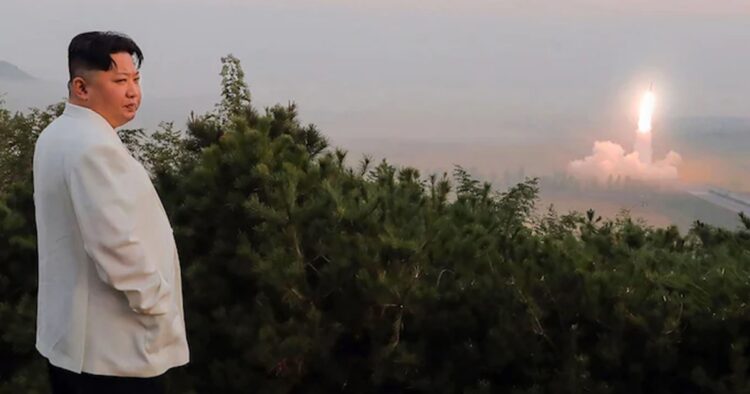In a recent development, North Korean leader Kim Jong Un oversaw the test firings of new cruise missiles designed for submarine use, according to state media reports on Monday. These missiles, named Pulhwasal-3-31, were fired over waters near the eastern port of Sinpo, where North Korea operates a major shipyard focusing on submarine development. The move is seen as part of Kim’s efforts to build a nuclear-armed navy, which he claims is necessary to counter perceived external threats.
The missiles were fired at an angle of approximately 45 degrees, creating distinct grayish-white clouds upon breaking the water surface. Images published by North Korea’s official newspaper, Rodong Sinmun, suggested that at least two missiles were launched separately. The vessels used for these launches were not specified in the reports, and North Korea has previously tested missiles from both developmental missile-firing submarines and underwater platforms on barges.
The Pulhwasal-3-31 missiles were first tested on land from North Korea’s western coast the previous week. The recent submarine-based tests aim to enhance North Korea’s capability to conduct nuclear strikes from underwater, providing a survivable means of retaliation in the event of a nuclear attack on land. Such a development would add a maritime dimension to North Korea’s existing solid-fuel weapons, designed to overwhelm missile defenses in the region.
While North Korea expressed satisfaction with the test results, experts believe that building a reliable fleet of submarines capable of carrying out such attacks would require substantial time, resources, and technological advancements for the heavily sanctioned nation. Kim has reiterated his goal of building a nuclear-armed navy since September, detailing plans for nuclear-propelled submarines and the modification of existing vessels for nuclear weapon deployment.
As of now, North Korea possesses an estimated 70 to 90 diesel-powered submarines, mostly aging vessels with limited capabilities. Analysts suggest that external assistance may be needed for North Korea to realize its near-term goal of developing nuclear-propelled submarines.
Tensions on the Korean Peninsula have been escalating as North Korea accelerates its weapons development, accompanied by provocative threats of nuclear conflict with the United States and its allies in Asia. In response, the U.S., South Korea, and Japan have been expanding joint military exercises and refining deterrence strategies, incorporating nuclear-capable U.S. assets.
The recent submarine-launched cruise missile tests come on the heels of North Korea’s test firing of its first solid-fuel intermediate-range ballistic missile on January 14. Kim’s persistent efforts reflect a broader strategy to diversify and strengthen the country’s arsenal, specifically targeting missile defenses in South Korea, Japan, and U.S. territories in the Pacific, including Guam.

















Comments